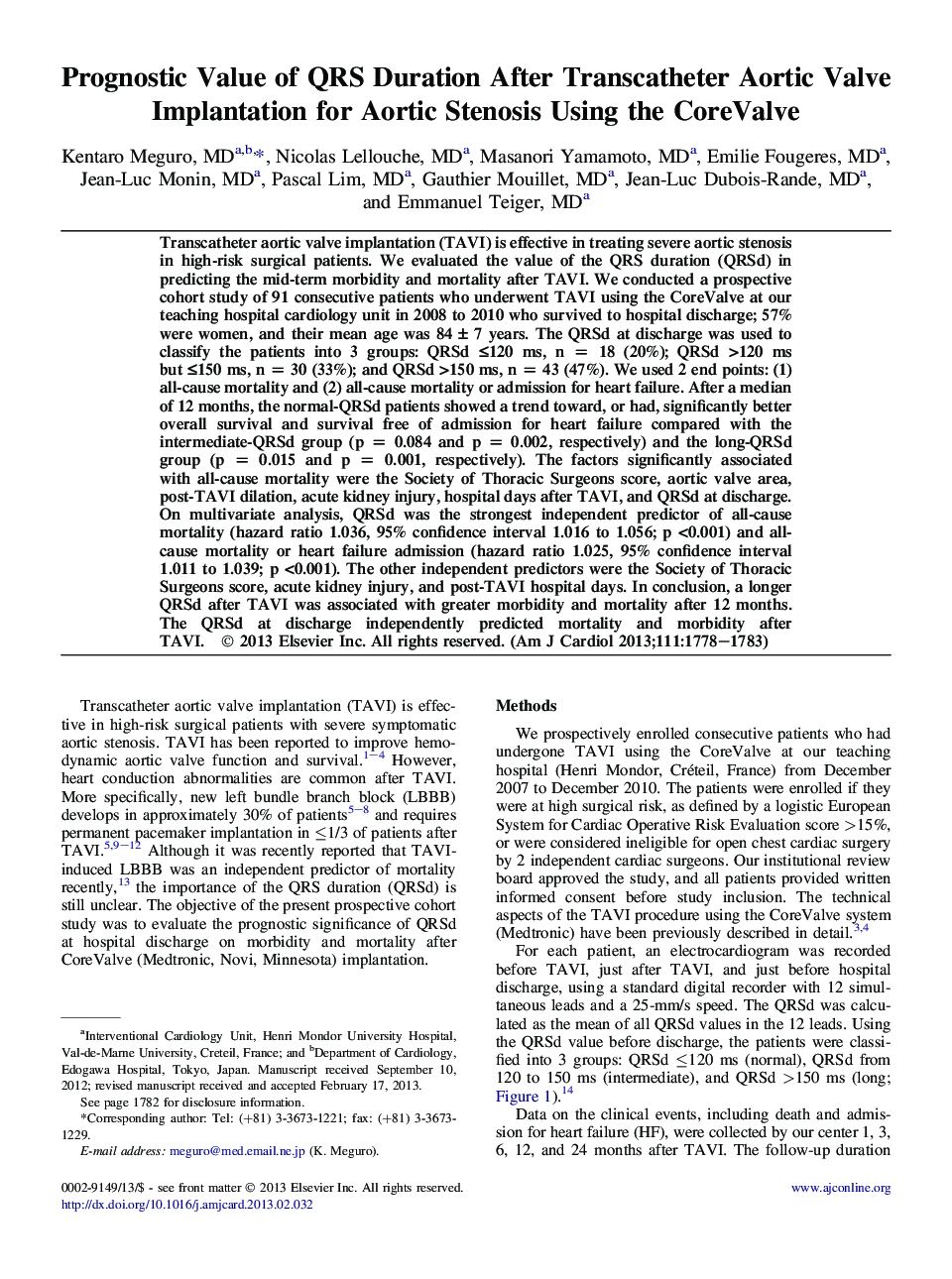| کد مقاله | کد نشریه | سال انتشار | مقاله انگلیسی | نسخه تمام متن |
|---|---|---|---|---|
| 2854981 | 1572189 | 2013 | 6 صفحه PDF | دانلود رایگان |

Transcatheter aortic valve implantation (TAVI) is effective in treating severe aortic stenosis in high-risk surgical patients. We evaluated the value of the QRS duration (QRSd) in predicting the mid-term morbidity and mortality after TAVI. We conducted a prospective cohort study of 91 consecutive patients who underwent TAVI using the CoreValve at our teaching hospital cardiology unit in 2008 to 2010 who survived to hospital discharge; 57% were women, and their mean age was 84 ± 7 years. The QRSd at discharge was used to classify the patients into 3 groups: QRSd ≤120 ms, n = 18 (20%); QRSd >120 ms but ≤150 ms, n = 30 (33%); and QRSd >150 ms, n = 43 (47%). We used 2 end points: (1) all-cause mortality and (2) all-cause mortality or admission for heart failure. After a median of 12 months, the normal-QRSd patients showed a trend toward, or had, significantly better overall survival and survival free of admission for heart failure compared with the intermediate-QRSd group (p = 0.084 and p = 0.002, respectively) and the long-QRSd group (p = 0.015 and p = 0.001, respectively). The factors significantly associated with all-cause mortality were the Society of Thoracic Surgeons score, aortic valve area, post-TAVI dilation, acute kidney injury, hospital days after TAVI, and QRSd at discharge. On multivariate analysis, QRSd was the strongest independent predictor of all-cause mortality (hazard ratio 1.036, 95% confidence interval 1.016 to 1.056; p <0.001) and all-cause mortality or heart failure admission (hazard ratio 1.025, 95% confidence interval 1.011 to 1.039; p <0.001). The other independent predictors were the Society of Thoracic Surgeons score, acute kidney injury, and post-TAVI hospital days. In conclusion, a longer QRSd after TAVI was associated with greater morbidity and mortality after 12 months. The QRSd at discharge independently predicted mortality and morbidity after TAVI.
Journal: The American Journal of Cardiology - Volume 111, Issue 12, 15 June 2013, Pages 1778–1783